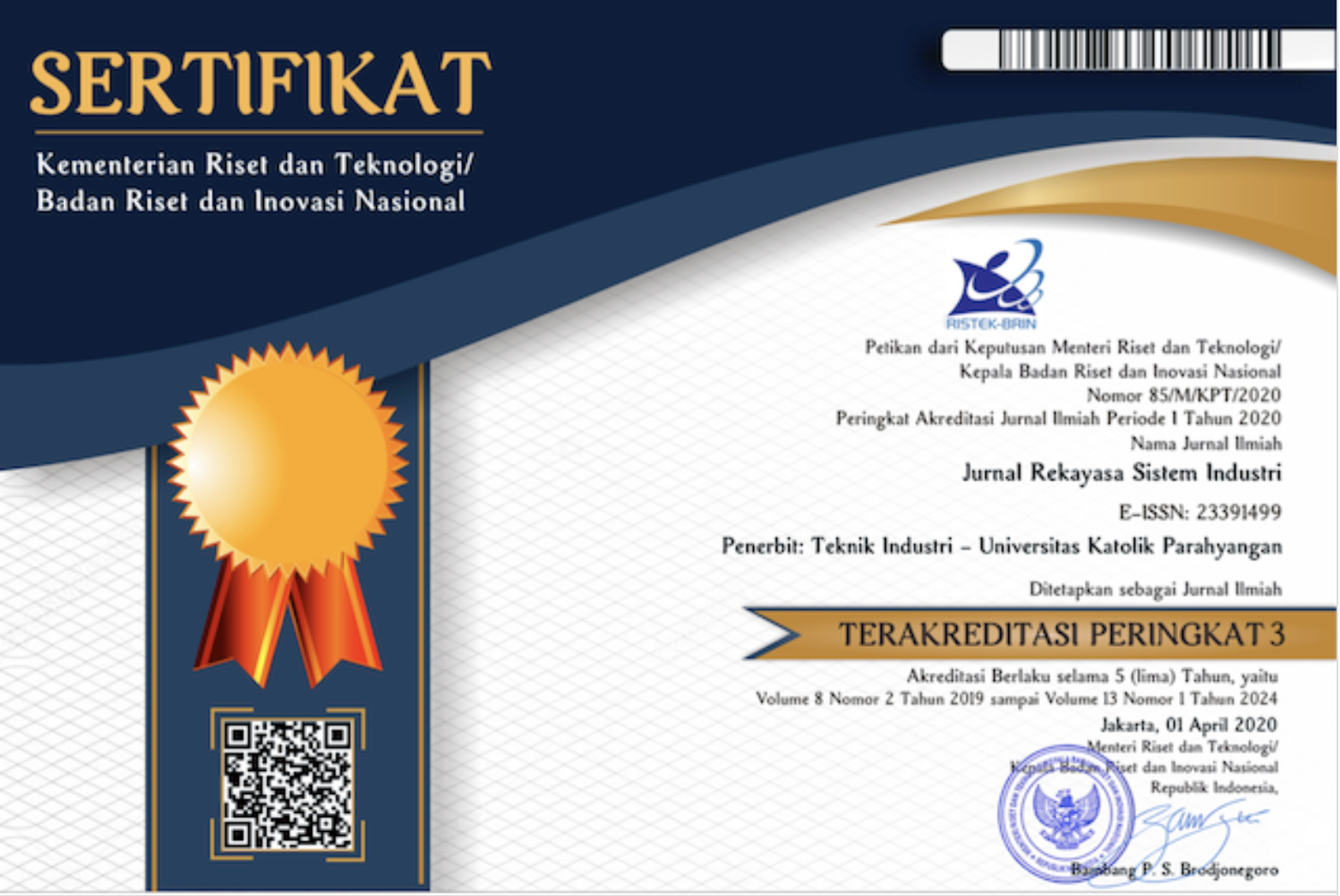Accreditation (SINTA 3)

Plagiarism
Editorial Board of Jurnal Rekayasa Sistem Industri Editorial board stand firm and believe that plagiarism is not acceptable. JRSI uses iThenticate detection software (web-based) to check the similarity and plagiarism before we publish the article online.
When plagiarism is identified, the Editor in Chief responsible for the review of this paper and will agree on measures according to the extent of plagiarism detected in the paper in agreement with the following guidelines:
Level of Plagiarism
Similarity Check using IThenticate
According to the JRSI plagiarism & Retraction policy, all articles that will be published in JRSI will be examined in a similarity check using iThenticate similarity Check.
Retraction Policy
The JRSI Editorial Team has the right to refuse articles that are deemed to have problems with the plagiarism & retraction policy, and JRSI has the right to retract articles that have been published in JRSI.
The Editor of JRSI is responsible for maintaining the list of authors subjected to penalties and will check that no authors of a submitted paper are on this list. The Editor Team of JRSI will consider retracting a paper that already published in JRSI if :
Accreditation (SINTA 3)
